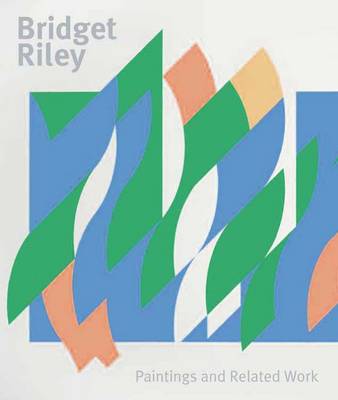National Gallery London Publications
4 total works
For 50 years Bridget Riley has been regarded as one of Britain's most important abstract artists, renowned for large paintings that feature complex, repetitive geometric shapes and undulating linear patterns. It is fascinating to discover that she sees her decidedly modern paintings as following in an Old Master pictorial tradition. This affinity stems from a lifelong passion for paintings in the National Gallery, London, with which she was first associated as a young student, and later as a Trustee and exhibiting artist.
This book celebrates the artist's long engagement with the National Gallery. The authors discuss the significance of paintings from the Gallery's collection that Riley chose for exhibition alongside her own works, and they explain how the fluid lines of Renaissance and Baroque paintings, together with their palette of ochres, salmon, greens, and light blues, translate into the abstracted shapes that appear in Riley's work. The authors also demonstrate how the techniques and methods of modern masters including Cézanne, Seurat, and Matisse exert an important influence on Riley's paintings.
Published by National Gallery Company/Distributed by Yale University Press
Exhibition Schedule:
National Gallery London
(11/24/10-05/22/11)
British artist Alison Watt (b. 1965) creates monumental paintings depicting richly draped fabric. These canvases show closely cropped folds, gathers, tucks, and creases––all sensuously developed from a selective palette of white, grey, burnt sienna, cadmium red, and yellow.
The National Gallery’s seventh Associate Artist, Watt has been working in a studio near the permanent collection. This proximity to masterpieces she has long admired has concentrated her focus on the tradition of drapery in western art and inspired her dramatically abstracted reinterpretations. This beautifully designed and illustrated book presents her most recent series of powerful, large-scale paintings. In an essay featuring photographs of Watt at work in the gallery studio, Colin Wiggins reviews the artist’s creative process. Also included is a new piece written by celebrated Scottish poet Don Paterson that responds to these works.
Published by National Gallery Company/Distributed by Yale University Press
Exhibition Schedule:
National Gallery, London (March 13 – June 22, 2008)
British artist Michael Landy (b. 1963) is known primarily as an installation artist. His work, along with others associated with the Young British Artists (YBAs), was first catapulted to the world spotlight when it was featured in the notorious Sensation exhibition (1997). His sculptural installations and performances explore political and social themes, such as the nature of consumerism and commodity.
In 2009, Landy began a three-year artist residency at the National Gallery, London. He chose to focus his project on representations of saints and their accompanying stories, often gruesome, which were once part of common culture but are now largely unknown. Landy’s preoccupation with recycling narratives and repurposing imagery results in Saints Alive, the subject of this book, conceived to include drawings, collages, and a series of kinetic, interactive sculptures with moving parts and sounds.
Published by National Gallery Company/Distributed by Yale University Press
Exhibition Schedule:
The National Gallery, London(05/23/13–11/24/13)
This catalogue showcases a recent body of work inspired by the National Gallery’s own collection and in particular by J.M.W. Turner’s The Evening Star (c.1830). For Scully, this elegiac picture constitutes one of Turner’s most profound paintings, leading to new departures in his own work. Using the motif of stripes or chequerboards, Scully evokes landscapes and architecture, horizons, fields, and coastlines, in which his contemplative forms become reminders of personal experiences and distinctive moments. Vast, bold panel paintings with richly textured surfaces are illustrated together with delicate works on paper: aquatints and luminous pastels. The accompanying text includes newly commissioned essays, and poetry by Vahni Capildeo and Kelly Grovier, while a unique photo essay by Irish novelist Eimear McBride highlights the sweeping impasto, strong brushstrokes, and vivid colors that distinguish Scully’s painting.
Published by National Gallery Company/Distributed by Yale University Press
Exhibition Schedule:
National Gallery, London
(04/13/19–08/11/19)



